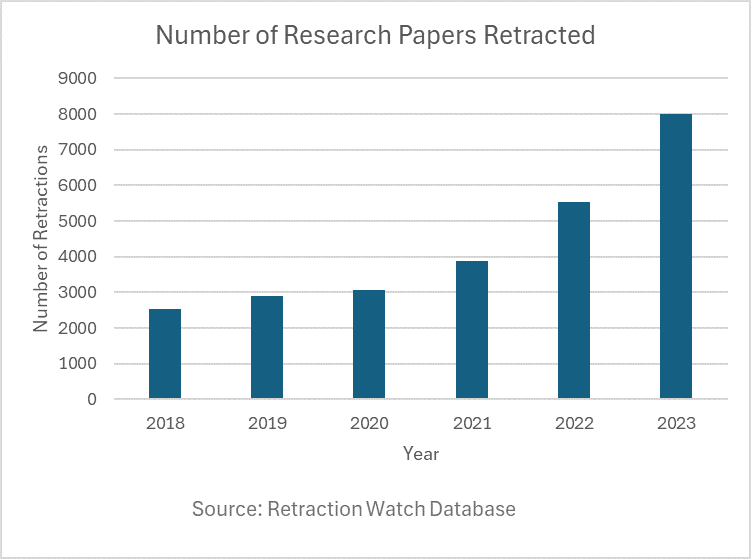
Sources of Information are the backbone of news articles, they allow news publications to release unique information and expert opinions. However, considering how those sources are found and used is often not contemplated. Bias in media has been at the forefront of discussions for years now, and examination of this issue frequently focuses on the language used by the author within their writing. Examining source quality is also important for uncovering bias in news articles.
The main types of sources are as follows:
- Primary
- Secondary
- Tertiary
A primary source is first-hand information, while a secondary source is an interpretation of a primary source. Finally, tertiary sources are a collection of information, usually, these come in the form of large databases or search engines which hold large amounts of information from many contributing authors. While one may think that an author only needs primary sources to write an article, and this may be true in some cases, secondary and tertiary sources can provide valuable information since an author cannot be an expert in every field of study. These sources do not come without their issues related to bias, we will seek to understand what some of them present throughout this article.
Primary Sources
Presenting unique information is the main task of journalists, almost every news article will contain some form of a primary source. Considering this, it is important to understand some of the pitfalls of these sources, and how using sources incorrectly may lead to increased bias within an article.
First, we must understand better what these primary sources are, as mentioned previously, primary sources are associated with first-hand information. A few examples of these are here as follows:
- Interviews/Speeches/Press Conferences
- Laws/Legislation/Constitutions
- Government Documents (Birth/Death Certificates, Court Transcripts, etc.)
- Scientific Research/Government Reports
- Diaries/Autobiographies
- Initial Data Collection
- Artwork
- News Reports (Some)
Interviews
First, interviews and speeches, or any information taken from individuals can present bias. They can also present information incorrectly either knowingly or unknowingly, memory is unreliable. Some studies have found that witness testimonials and memory can be unreliable, especially for children. More research has found that memory over time can be especially fickle, additionally, memory of a specific incident can often be morphed over time due to various factors such as stress, time of day, or even the current season.
This then tasks journalists with sifting through the information given, however, this may not be possible in situations with limited witnesses, so the result would be the reader simply receiving erroneous information.
For example, after the Trump assassination attempt, there were some witnesses interviewed who gave out information that was later found to be incorrect based on evidence collected, such as one woman who claimed the shooter was perched on a water tower. In stressful situations where information is limited, an increased burden is placed on witness memory, which cannot be trusted outright.
Biased authors may also utilize interviews to fit their desired narrative since interviews can provide a sense of reliability. When the author’s opinion is corroborated by an outside source, the information presented may seem more trustworthy to the reader. Even when an interviewee may not be a reliable source, the author may still receive some of that benefit.
Scientific Research
Studies, which are classified as primary sources are a useful resource for authors who are not experts in a certain field, they allow them to provide evidence in a circumstance when they would otherwise not be able to. They also can come with a range of issues, for example, in 2023 the number of studies retracted passed 8,000:

Unreliable research can produce unique findings, which may lead to a biased author searching out research with the results that fit their desired narrative. The more unreliable studies in circulation, which is increasing by the year, the more opportunities biased authors have to use that data.
Primary Data Collection
Data collection is the primary avenue for which unique research and studies are performed. There is, however, a difference between primary data and the use of secondary data for research. Primary data is the information gathered directly by the researcher, while secondary data is the information that has been previously collected by another individual or entity. While there are issues with primary data collection, such as faulty research design and bias when conducting research, an increase in bias may be even more prevalent in studies using secondary data. We will investigate this further in the secondary sources section.
News Reports
News reports, classified as primary sources can also present issues, a news report can be classified as a primary source if it presents first-hand information, such as eyewitness testimony, interviews, etc. If an author is biased, that author may choose to reference an article from another author who presents a similar bias. There are many biased news articles in circulation, many of which can be seen on Biasly’s Article Bias Ratings. Presenting a news article as a source can increase the credibility of an article if performed correctly, as it can offer the reader additional context.
However, if an author uses biased news articles as a source within their story, it can have multiple negative effects. First, it decreases the reliability of the article and publication. Second, it is difficult to root out the issue, checking the bias of articles used as sources, which likely also have other articles linked, is a near-endless task. Even if an author does not intentionally utilize an article containing bias, it is still misinforming both them and the reader.
Secondary Sources
Unlike primary sources, secondary sources are not first-hand information, meaning that there is some form of analysis or opinion given by the source. Secondary sources are still important because they can provide valuable insight into a topic that a journalist would not otherwise be able to provide. Some examples of secondary sources are:
- Books
- Opinion Pieces
- News Articles without primary sourcing.
- Second-hand Data Analysis
- Literature Review/Meta-Analyses
- Biographies
One of the biggest issues, which encompasses almost all secondary sources, is that they are an order of magnitude further away from the source of the information. While the sources discussed in the previous section can come with their share of issues, secondary sources have another layer. This is because the source and its information have at least double the chances of being altered with bias.
There is, first, the original (primary) source of information which as discussed previously may contain issues. Then, a secondary analysis or opinion, which in many cases will carry an intended bias like opinion pieces or analyses, others may not intend to carry a bias and present the work as neutral, such as a biography. Unintended bias is an issue in research communities and news publications alike, an extra degree of scrutiny is needed when interacting with second-hand information. Even when diligent, bias issues are more likely to present themselves when compared to the use of primary sources.
News articles classified as secondary sources can present similar issues to those referenced above. Articles categorized as secondary sources generally present some form of research, analysis, or contextual information surrounding an event. With another degree of separation between first-hand information and the reader, there are more opportunities for the insertion of bias, considering this, articles classified as secondary sources are generally less trustworthy.
An author who wishes to gather resources to fit a certain narrative will find that task easier with secondary sources where a variety of opinions on a subject are more likely to be found.
Tertiary Sources
Tertiary sources refer to reference material that helps compile information together. These sources are useful because they make the job of researching far more streamlined. Some examples of these sources are:
- Search Engines
- Wikipedia
- Dictionary/Encyclopedia
- Databases (Some)
- Artificial Intelligence
The use of these sources is less common in typical journalism, additionally, the nature of the source means that many authors contribute to them, which may safeguard them from adverse bias inserted from individuals. Considering this, and that their prevalence as sources are less than primary or secondary, it is generally safer to assume that these sources do not contribute to a large amount of bias in news articles.
Wikipedia
There are, although, some concerns regarding these sources. First, Wikipedia is a resource that can be edited by members of the public, meaning that the information gained from it may not always be reliable. It is generally frowned upon to claim Wikipedia articles as trustworthy, although, research has shown that it is still widely used in many circumstances.
Search Engines
Search engines have also come under scrutiny regarding the bias of their results, some researchers claim that they make editorial judgments of what to display in their top results similar to a news publication. The result of this means that the top content displayed from a search may not be a neutral article, rather, whichever article gains the most traction, meaning prominent articles displayed on search engines may contain bias. For more information about the bias of search engines, Biasly has recently published reports on the bias in search results for Google and Bing.
Artificial Intelligence
Artificial intelligence is more commonly used now than ever, industries such as education, healthcare, research, journalism, and more have begun utilizing it. The use of AI, nevertheless, has not come without its issues, studies have found that the information some AI programs present is not always accurate. AI can obtain biases and other flaws through the data on which it is trained, it may produce biased, incomplete, or incorrect responses due to this. Large language models such as ChatGPT are some of the most common culprits for producing erroneous information, this is in part due to their sheer complexity and their novelty. Authors and journalists who do not corroborate information obtained using AI with outside resources may produce untrustworthy and biased work.
Understanding Different Sources
While there are concerns associated with many of the different sources discussed in this article, it is important to underscore their necessity. They all provide a different perspective and can provide a deeper insight into many topics.
Understanding the issues with sources helps create awareness that bias can stem not only from the language an author uses but also from the evidence they employ. Understanding this can be useful in gaining the most accurate and neutral information from news outlets. Another resource helpful in this is Biasly’s News Check, which can help uncover many bias and reliability issues associated with your desired news source.























